Nikon's D1x--First Week
all photos copyrighted, please respect!
photo captions and info at bottom of page
06.27.01
What an exciting day it was when our UPS man dropped off my D1x kit! That
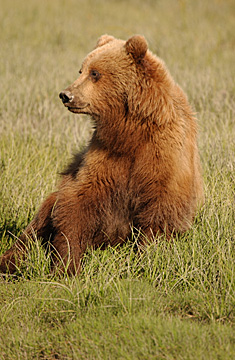 Christmas
morning feeling of opening the box and pulling out the camera body was
quickly replaced with the knowledge that there was work to begun. The
first D1x I received I would have for only ten days. Luckily, nine of
those days I would be in Alaska. Testing gear under actual working conditions
is by far my favorite way of seeing what it really can do. This is what
I've learned so far (there's a lot more to go). Christmas
morning feeling of opening the box and pulling out the camera body was
quickly replaced with the knowledge that there was work to begun. The
first D1x I received I would have for only ten days. Luckily, nine of
those days I would be in Alaska. Testing gear under actual working conditions
is by far my favorite way of seeing what it really can do. This is what
I've learned so far (there's a lot more to go).
D1x Flash
One of my biggest disappointments in the D1 is its flash abilities (or
inabilities) so the first thing I tested with the D1x is its flash capabilities.
(example images)
For those not understanding the D1's flash inabilities,
let me briefly explain. The D1 does not have true TTL flash like that
found in the F5 and other Nikon conventional bodies. The D1 does not have
the OTF (Off The Film) component of the traditional TTL formula because
it does not have film to bounce light off of. This means the D1 relies
on the Monitor PreFlash for its main flash exposure. The Monitor PreFlash
is only effective when the subject is less than 20 feet away. It has other
associated pitfalls such as working with bright subjects with dark backgrounds.
For this reason, A (automatic) rather than TTL is the most typical flash
setting with the D1 for me.
The first thing I did with the D1x is to slap a SB-28dx
on and do some quick test shots. I placed my wife in front of a bank of
black filing cabinets; 25 feet away from me; and 20 feet in front of the
background. With each situation I took shots and looked at the results
on the LCD. WOW! To be honest with you, I was expecting the typical D1
flash-subject blow out but instead, I saw really nicely exposed flash
photos! It's not that the D1x has new flash technology, just that the
firmware/software controlling flash has been updated to solve the previous
D1 problems.
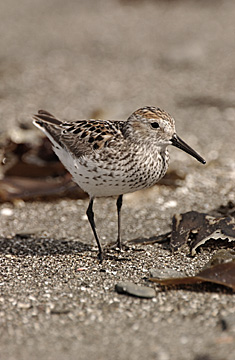 As
a wildlife photographer, the typical scenario I run into is a subject
in front of a dark background that needs to be flash filled. This is something
the D1 simply doesn't handle with grace, in fact it has been a point of
great frustration for me personally coming from shooting with the F5.
So while the D1x proved itself in my quick "in office" tests, it's in
the field with real shooting scenarios that helps make up my mind up that
something either works or doesn't work. I had been photographing some
nesting Mountain Bluebirds when the D1x arrived, I couldn't think of a
better opportunity than to photograph them as I already knew how the D1
wasn't working. As
a wildlife photographer, the typical scenario I run into is a subject
in front of a dark background that needs to be flash filled. This is something
the D1 simply doesn't handle with grace, in fact it has been a point of
great frustration for me personally coming from shooting with the F5.
So while the D1x proved itself in my quick "in office" tests, it's in
the field with real shooting scenarios that helps make up my mind up that
something either works or doesn't work. I had been photographing some
nesting Mountain Bluebirds when the D1x arrived, I couldn't think of a
better opportunity than to photograph them as I already knew how the D1
wasn't working.
Shooting with the 600f4AFS, I set up the D1x and SB-28dx
as I would normally with the F5 (not the D1) which means the flash is
set to DTTL with -2/3 comp for flash fill. Using the SD-8a with PowerEx
batteries, I focused on the bluebirds favorite perch. In this same situation
with the D1, I would have to put the flash on A with +1/3 to get the flash
fill exposure I wanted. The first time the bluebird landed, I fired off
my nine frames (the max with the D1x, even shooting in FINE Large mode).
I anxiously waited for the D1x to finish writing the files to depress
the Monitor button. I was so happy when the first image popped up showing
me the D1x had delivered the correct flash fill exposure. I tried the
D1x with the bluebirds with every type of background available and it
delivered the correct flash fill for me everytime! With that piece of
the puzzle answered, I went on to the metering next.
D1x Metering
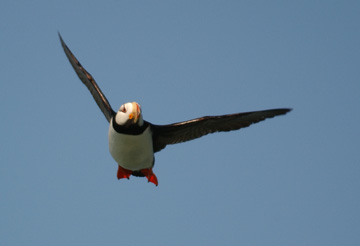 While
the D1 does a good job with metering (matrix mode), it certainly is no
F5 in fool proof consistency! Dialing in exposure comp with the D1 reminds
me kind of the days of shooting with the F4s. One area in metering that
drives me nuts with the D1 is its inconsistent handling of white birds
on blue water. If in this scenario and the light is direct frontlighting,
the D1 does not get the exposure correct (where it will with other lighting
patterns). I wanted to find out if this metering problem had been fixed
in the D1x. While
the D1 does a good job with metering (matrix mode), it certainly is no
F5 in fool proof consistency! Dialing in exposure comp with the D1 reminds
me kind of the days of shooting with the F4s. One area in metering that
drives me nuts with the D1 is its inconsistent handling of white birds
on blue water. If in this scenario and the light is direct frontlighting,
the D1 does not get the exposure correct (where it will with other lighting
patterns). I wanted to find out if this metering problem had been fixed
in the D1x.
Liked I mentioned, my D1x shake down ride was in Alaska
where finding white birds on blue water, or blue sky, was no problem!
I shot the same subjects with the D1x and the D1, both using the 80-400VR.
I photographed both puffins (B&W birds) along with gulls (all white birds)
on the water and in the sky. With the D1 I would have to dial in the usual
-2/3 comp for the right exposure. But with the D1x, this was not the case,
no compensation was required, it nailed the exposures! In fact, the entire
4gigs of images I shot with the D1x, I didn't have to dial in any compensation
to achieve the correct exposure once. Keep in mind that I normally shoot
within a three stop range of light to start with but even some cases where
the D1 would be fooled, the D1x was not. I was happy!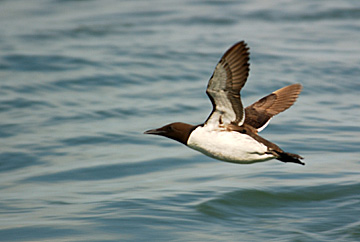
D1x battery consumption
As with any new EN-4 battery, the first thing I did was to "refresh" it
3 times prior to use. With this done, I put the new EN-4 into the D1x.
After the first 900 captures the battery was still going strong, this
really made me wonder. When the battery did go to half (which is indicated
in the D1x's viewfinder with a blinking meter symbol), I recharged it,
placing that battery in my D1 and used one of my other older batteries
in the D1x. The D1x again got 900+ captures (FINE Large mode) while the
D1 with the new battery got the customary 300+ captures. Talking with
Nikon and other D1x shooters, this seems to be the norm for the D1x, much
better battery life. Thanks goodness!
D1x setup
The UI (user interface) on the D1x is vastly improved! Anyone coming from
a D1 can easily in minutes set up all their personal preferences. The
D1x has basically four menus which are accessed via depressing the MENU
button and then reading the options on the menu on the LCD monitor. Everything
is accessed and set in this way which just takes seconds to do. I will
go into this in greater depth at some later time.
D1x LCD
The D1x LCD shows 100% of the image you captured, not 92% like the D1.
This was accomplished by simply making the image smaller to fit the LCD.
The D1x LCD can display all sorts of things the D1 cannot. You can "zoom"
in on an image on the D1x if desired. You have in fact, eight different
"screens" of info the D1x can display which include new ones like GPS
or oldie but goodies, Highlights and Histograms (which is displayed over
the image).
Is the LCD brighter and easier to see in the daylight?
I don't think so. What about the new clear, LCD cover that comes with
the D1x? It might as well be black because it's so opaque it's useless
IMHO. Stick with the Hoodman , it
is by far the best option.
D1x Files
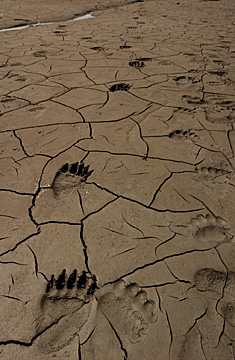 Of
course, the big thing about the D1x is its big file capture. Well, those
who have read my previous digital articles know I'm not into big file
capture. With the D1x, I set it to FINE Large. The D1x offers a Large
& Medium file option for all but one file capture. In the case of the
FINE mode, Large captures a 2.8MB file and Medium a 1.3MB (there is no
small mode). For 95% of what I shot with the D1x, this is the mode I used.
I did though, test all other file captures on the D1. You have the options
of High YcbCr-TIFF (L-11.2MB & M-5MB), High RGB-TIFF (L-16.9MB & M-7.5MB),
High RAW Uncompressed (L-7.6MB & M-3.5MB), FINE 1:4 (L-2.8MB & M-1.3MB),
Normal 1:8 (L-1.4MB & 640k), Basic 1:16 (L-720K & 320K). I shot in everyone
of these modes many times, a lot taking side by side tests. While I've
not made prints from all of them yet, I am impressed. While the D1 produces
marvelous results, I think the D1x produces even cleaner, large enlargements! Of
course, the big thing about the D1x is its big file capture. Well, those
who have read my previous digital articles know I'm not into big file
capture. With the D1x, I set it to FINE Large. The D1x offers a Large
& Medium file option for all but one file capture. In the case of the
FINE mode, Large captures a 2.8MB file and Medium a 1.3MB (there is no
small mode). For 95% of what I shot with the D1x, this is the mode I used.
I did though, test all other file captures on the D1. You have the options
of High YcbCr-TIFF (L-11.2MB & M-5MB), High RGB-TIFF (L-16.9MB & M-7.5MB),
High RAW Uncompressed (L-7.6MB & M-3.5MB), FINE 1:4 (L-2.8MB & M-1.3MB),
Normal 1:8 (L-1.4MB & 640k), Basic 1:16 (L-720K & 320K). I shot in everyone
of these modes many times, a lot taking side by side tests. While I've
not made prints from all of them yet, I am impressed. While the D1 produces
marvelous results, I think the D1x produces even cleaner, large enlargements!
To avoid a bunch of emails with the question, what file
size will I settle on, here's the answer. At this time with the shooting
I've done with the D1x, I will continue to use the FINE, Large file size.
Since the FINE file size has served me and my clients so will with the
D1, the even larger FINE file from the D1x will more than cover my needs.
Will I shoot bigger files for bigger prints? No, for the same reason.
Do I see any need for the large files? Not for my needs or those of my
clients. If that changes, I know that with the D1x, I can easily deal
with that change and be successful!
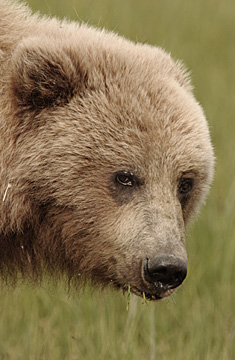 D1x
- 1st week conclusion D1x
- 1st week conclusion
While I shot 4gigs of images with the D1x, I've not been able to digest
all that I've captured, there is that much new with the D1x! My first
impressions of the D1x are, it rocks! I honestly didn't think the D1x
would really be a camera for me as I don't need large files and its slow
3.5fps and limited 9 frame burst doesn't really lend itself to wildlife
photography. But the fixes for the flash and metering really grabbed my
attention to the point where I will probably replace at least one of my
D1s for the D1x. I have applications where I don't need the fast frames
per second. It would be nice that if I did get a phone call from a client
requiring a big file, I had the ability to deliver.
The really exciting thing to me is knowing that the improved
firmware/software in the D1x is in the D1H that is soon to be released!
Now that's the camera I truly think will be the digital wildlife photographer's
dream!
D1x Problems?
My mailbox is already being filled by folks asking, "what problems
does the D1x have?" And when I tell them I don't know, I've only
had the camera a week, they come back with, "you've been paid off
by Nikon, you won't say!" I just love the public! At this very early
stage of shooting with the D1x I have run into only one glitch which seems
to be pilot error (that means I did something wrong) and not a D1x problem.
If it's a confirmed pilot error, I sure ain't going to announce it on
the web. If it turns out to be a D1x problem, I'll either put it on the
website, or in the book and make you pay for a change to find out the
answer :). But in 11 days of shooting with the D1x, I've not found anything
to report as a camera wide problem. Sorry to disappoint some of you.
As I get more time and I have more to share, I will update
this page. As I'm gone most of the next three months, it will be bits
and pieces as I can squeeze in the time to add to this page. Bare with
me! And all of my findings, operational insights for the D1, D1x & D1H
will be in my upcoming 200pg+ book , The D1 Generation
(co-authored with David Cardinal) that will be out this fall.
--Moose Peterson Update:
See what Moose finally decided about
the D1X
Photo Captions:
Grizzly Bear - D1x, 600f4AFS, Cloudy -3 ISO 200, Lexar
320MB 12x CF card
Western Sandpiper - D1x, 600f4 AFS w/TC-14e, Cloudy -3, ISO 200, Lexar
320MB 12x CF card
Horned Puffin - D1x, 80-400VR (from a boat), Cloudy-3, ISO 200, Lexar
320MB 12x CF card
Common Murre - D1x, 80-400VR (from a boat), Cloudy -3, ISO 200, Lexar
320MB 12x CF carf
Grizzly Bear Tracks in the mud - D1x, 14f2.8, Cloudy-3, ISO 200, Lexar
320MB 12x CF card
Grizzly Bear - D1x, 600f4AFS,
Cloudy -3 ISO 200, Lexar 320MB 12x CF card
All text and images © Copyrighted B. Moose Peterson / WRP 2001
Last Updated: 28 June 2001
|